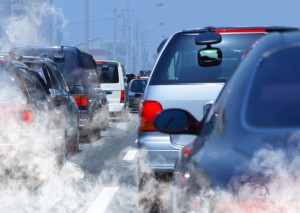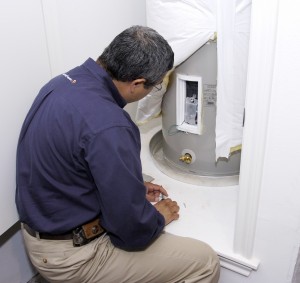- Tahoe’s Nevada Beach Tops the List of Hard-to-Book Campgrounds - 07/17/2024
- Cannabis Watershed Protection Program Cleans Up Illegal Grow Sites - 07/10/2024
- French Fire - 07/05/2024

A recent study by the University of Southern California found that at least eight percent of the more than 300,000 cases of childhood asthma in Los Angeles County can be attributed to traffic-related pollution at homes within 250 feet of a busy roadway. Photo: Hemera Collection
Is it true that asthma cases in children often correlate to living close to roads and all the associated pollution-spewing traffic?
— Jake Locklear, San Diego, CA
Living near a roadway certainly does exacerbate asthma, especially for kids. To wit, a recent study by the University of Southern California (USC)—the most comprehensive by far to date on this topic—found that at least eight percent of the more than 300,000 cases of childhood asthma in Los Angeles County can be attributed to traffic-related pollution at homes within 250 feet of a busy roadway. The findings, released in the September 2012 online edition of the peer-reviewed journal, Environmental Health Perspectives, indicate that previous research underestimated the effects of roadway traffic on asthma.
“Our findings suggest that there are large and previously unappreciated public health consequences of air pollution in Los Angeles County and probably other metropolitan areas with large numbers of children living near major traffic corridors,” says Rob McConnell, one of the lead researchers on the study and a professor of preventive medicine at USC’s Keck School of Medicine.
“These findings confirm our understanding that air pollution not only makes things worse for people with asthma but can actually cause asthma to develop in healthy children,” reports Diane Bailey of the Natural Resources Defense Council (NRDC), a leading environmental non-profit. “It is even more sobering when you consider that 45 million Americans live within 300 feet of a highway and many of them are children.”
USC researchers note that new laws in California designed to reduce carbon output—improving fuel efficiency and reducing vehicle miles by increasing public transit options—will also help reduce asthma triggers. Some of the policies designed to reduce traffic congestion and car usage include offering housing developers incentives to locate projects closer to transit stops, thus encouraging use of public transit.
“Plans to reduce greenhouse gas emissions and combat climate change offer an opportunity to develop ‘win-win’ strategies that will maximize the health benefits from reduction both of greenhouse gases and of air pollutants that directly harm children,” McConnell says.
“There is also emerging evidence that other diseases may be caused or exacerbated by urban air pollution, including atherosclerosis, lung cancer, chronic obstructive pulmonary disease (COPD) and neurological disorders,” McConnell adds. “Thus, policies to combat climate change may have near-term health benefits beyond reducing the burden of disease due to asthma.”
According to NRDC’s Bailey, prioritizing the land directly next to freeways and other busy roads for commercial rather than residential use is one way to keep people at a safer distance from asthma-triggering pollution. Those who already live near busy roadways can help mitigate pollution effects by planting trees—foliage of all kinds is good at absorbing pollutants—and by filtering their indoor air to minimize overall exposure. But given that traffic pollution increases asthma by some eight percent, says Bailey, “we better do everything we can do reduce that pollution and minimize exposure to it.”
CONTACTS: Environmental Health Perspectives, ehp.niehs.nih.gov; NRDC, www.nrdc.org.
EarthTalk® is written and edited by Roddy Scheer and Doug Moss and is a registered trademark of E – The Environmental Magazine (www.emagazine.com). Send questions to: earthtalk@emagazine.com. Subscribe: www.emagazine.com/subscribe. Free Trial Issue: www.emagazine.com/trial.













